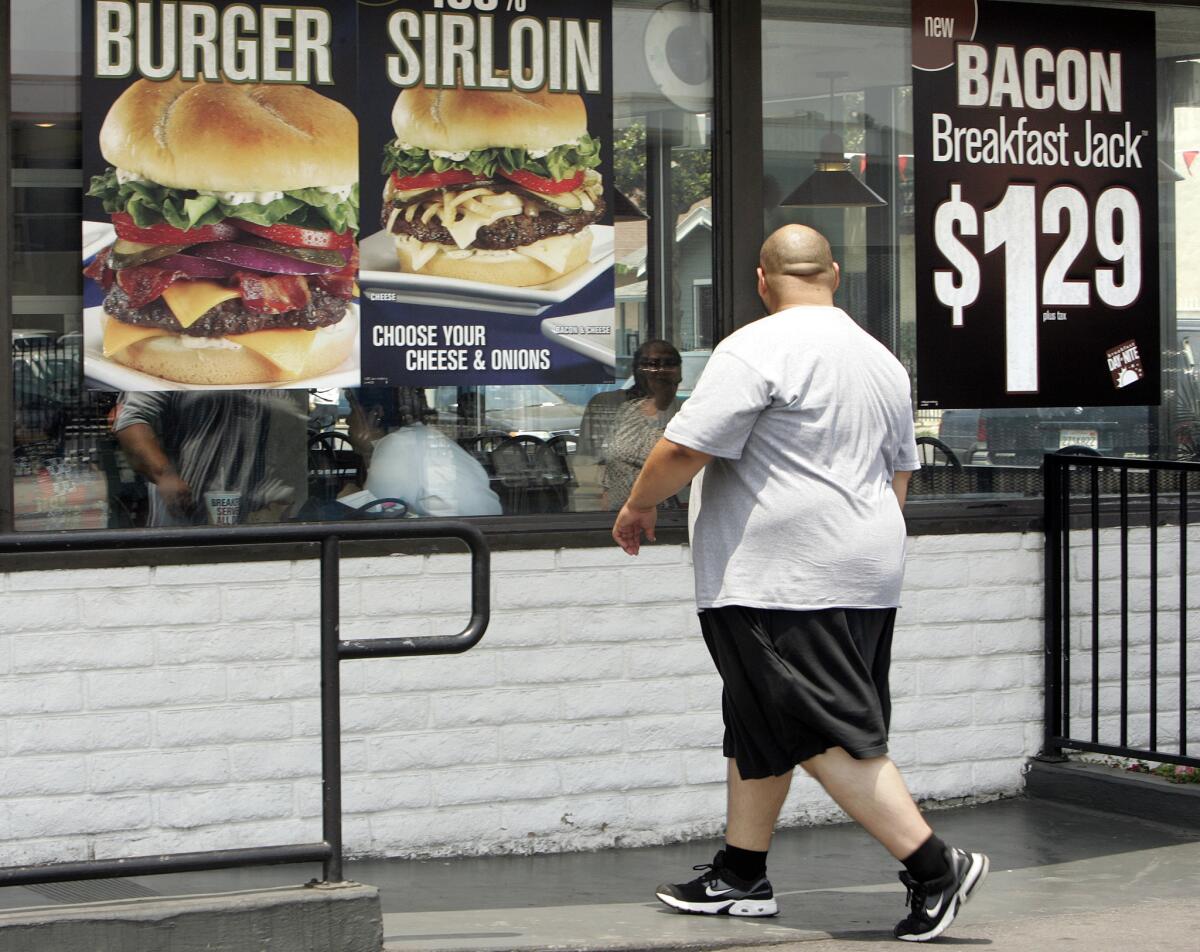More fast-food restaurants in South L.A. despite 7-year ban

- Share via
The number of fast-food restaurants in South Los Angeles has increased despite a law designed to curb the proliferation of such eateries and instead attract healthy eating options, a Times analysis shows.
The 2008 ordinance was seen as a novel approach to tackling South L.A.’s diet-related health issues by banning new free-standing fast-food restaurants.
But a loophole in the measure allowed new fast-food establishments to open in strip malls, and a recently-released Rand Corp. study reported that 17 new fast-food operations have opened since the ban went into effect, none of them free-standing.
“The belief was that shopping centers were very important and had a variety of businesses,” said Councilman C. Parks, who helped crafted the zoning restriction with former Councilwoman Jan Perry. “And often they did not build the same product that was within walking distance of their shopping center.”
A Times analysis of Los Angeles County Department of Health records shows, much like the Rand study did, that the ordinance has had little effect on the number and type of restaurants in South L.A.
In the 16 ZIP codes covered by the ordinance, there were 1,184 restaurants last year, an increase of 86 since the ordinance was adopted seven years ago.
Much of that increase fell into the category of small restaurants seating 30 or fewer customers. The number of large restaurants -- those seating 400 or more -- declined slightly from 31 to 26.
None of the new restaurants were the stand-alone operations prohibited by the ordinance, according to the Los Angeles Department of City Planning.
The majority of the new restaurants, however, were concentrated in the area immediately surrounding USC, an enclave within the ordinance area, but demographically much more akin to the Westside.
In the remainder of South L.A, the restaurant growth of about 3% mirrored the entire county, which showed a 5% growth in the number of restaurants.
While most of the growth both in South L.A. and across the county came from small restaurants, there was a slight decrease in the number of major chain restaurants, both in South L.A. and countywide.
The study released Thursday by Rand Corp., a nonprofit research organization based in Santa Monica, concluded that the ordinance had no impact on the obesity rate in South LA.
From 2007 to 2012, the percentage of people who were overweight or obese increased throughout Los Angeles County, but the increase was significantly greater in the areas covered by the ordinance, including Baldwin Hills and Leimert Park, according to the report.
“What has changed? Well, nothing,” said Roland Sturm, lead author of study and a senior economist at Rand.
For more California breaking news, follow AngelJennings on Twitter.
More to Read
Sign up for Essential California
The most important California stories and recommendations in your inbox every morning.
You may occasionally receive promotional content from the Los Angeles Times.












